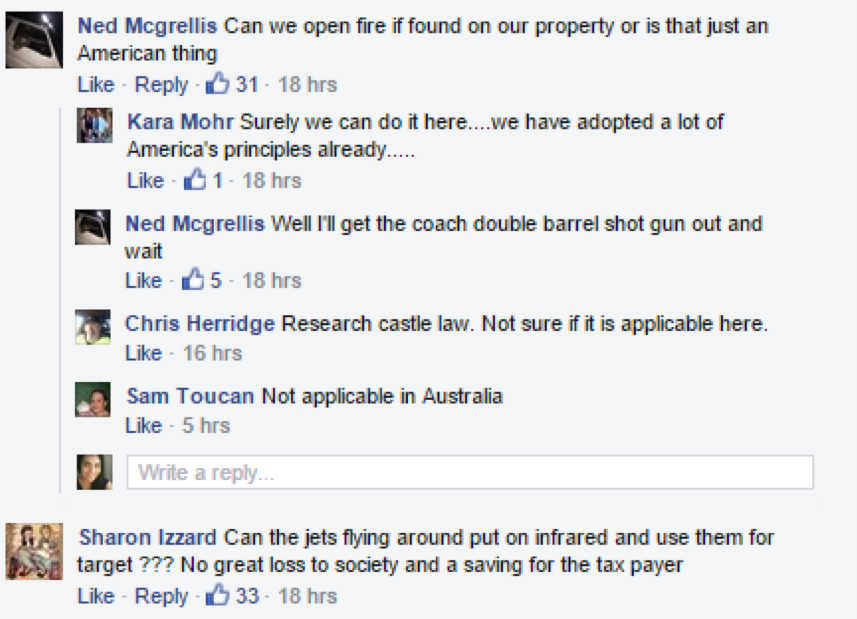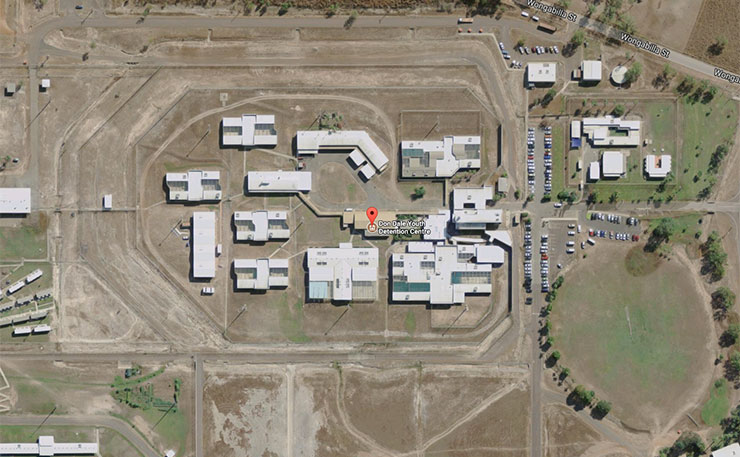Social media users have called on Aboriginal youth who have escaped from the Don Dale Detention centre to be ‘shot’, used for target practice, or fried on electric fences after NT Police uploaded pictures of juvenile offenders on their official social media accounts, calling into question the NT’s controversial ‘name and shame’ laws.
There have been a number of escapes from the detention centre since August, following the transfer of juvenile offenders to the site, previously the old adult Berrimah jail. Three years ago, NT Corrections Commissioner Ken Middlebrook said the jail needed a bulldozer.
Instead, it was given $800,000 in refurbishments, which legal groups say amounted to a ‘lick of paint’, and some of the most vulnerable youth in the Territory were moved in with a few days notice.
Since then, the high profile escapes have not only garnered public anger, but also concern from legal and human rights groups around the conditions at the centre.
About 97 per cent of the NT’s juvenile detention population is Aboriginal.
There was a highly publicised case of two teenagers who escaped from the centre in May, only to break back in with a car, performing burnouts before turning themselves in. Those two have been housed in the adult corrections centre at Holtze with a magistrate ruling yesterday they are safer there than at the Don Dale Detention Centre.
In a political climate focused on tough law and order measures, the Aboriginal Peak Organisations of the NT (APO NT) recently said it was “deeply concerned” about further crackdowns on kids in prison.
But it may not just be from the criminal justice system. Members of the public have made disturbing and violent comments calling for physical violence on the official NT Police Facebook page.
Earlier this week, another Aboriginal teenager escaped from the centre, for the second time since April. He was found later in the week.
The NT Police uploaded a picture, name and details of the child to Facebook, which was then shared by Nine News Darwin. Both posts provoked a number of comments calling on the child to be shot, used for target practice or fried on electric fences.
George Amberson wrote that “someone needs to put a bullet in this waste of space. Clearly has no intention of being a productive member of society.”
Ned Mcgrellis commented: “Can we open fire if found on our property or is that just an American thing”. The comment attracted one like.
Another user, Sharon Izzard, wrote “can the jets flying around put on infrared and use them for target??? No great loss to society and a saving for the tax payer”.
Kylie Hall wrote “electrify the fences with high volt when they try to escape they get fried. Show these young fools its not a joke taking up police time by their stupid stunts.”

One user also found the Facebook profile of the offender, and posted it in the comments.
The Northern Territory is the only jurisdiction in the country, other than Queensland, which allows the ‘naming and shaming’ of juvenile offenders. Under the Youth Justice act 2005, a young offender’s name and picture can be published publicly unless a Magistrate suppresses its publication.
It means the NT Police can continually publish the names and faces of young, vulnerable offenders, the majority of whom have a tragic history that has lead them into the criminal justice system.
Human Rights Law Centre lawyer Ruth Barson told New Matilda the comments were “absolutely shocking” and their “overtly violent and racist” nature was “deeply” offensive.
She said the NT government had to look at changing the laws because which stigmatises juvenile offenders.
“More broadly it speaks to the importance of the NT changing its laws around naming and shaming young people caught up in the criminal justice system,” Ms Barson told New Matilda.
“They are laws that are archaic and go against the principle that the youth justice system should be used to rehabilitate young people at risk. It’s doing more damage than any greater good.
“It attracts stigma and public shame and ostracises a young person. All of those things are the opposite of what the youth justice system is about, and what they should be trying to achieve.”
It’s a sentiment backed by Northern Australian Aboriginal Justice Agency (NAAJA) CEO Priscilla Collins, who told New Matilda the organisation had been talking to the NT Police about the practice and it was an issue on the “top of the agenda” to raise with the Corrections Commissioner.
The practice of naming and shaming juvenile offenders was an issue NAAJA has also raised with the NT government for a number of years, she said.
She said the NT Police did not need to put the faces of vulnerable children on social media, and that it was not in the interest of community safety.
“It’s a quicker way to find someone using Facebook, but why would you open it up to the public to make these disgusting comments. It’s going viral, and people are having a field day with it. It’s absolutely disgusting,” Ms Collins told New Matilda.
“It’s not about community safety. If you are out there to find somebody, it’s not the right way to go. The public shouldn’t be making their own personal comments. There are two sides to every story.”
Ms Collins says there several reasons why a young person would end up in the criminal justice system.
“What people need to understand is that when young people come into contact with the criminal justice system it’s a result of a cluster of issues. It’s not like these kids deliberately went out and committed and offence. It’s the upbringing, the family environment, it could have been a range of things.
“We need to work with youth to deal with these issues. These absolute idiots saying these disgusting things on Facebook don’t even know this child. They don’t know what happened to him, and what led up to the events. How is the youth going to feel positive to move forward?”
NAAJA’s principle legal officer Jonathon Hunyor told New Matilda that many of the Aboriginal youth breaking out of Don Dale were “desperate” in the face of a crumbling and inadequate youth justice system.
The two escapees who are now placed in the adult jail are under strict conditions. They will be locked down for 17 and a quarter hours a day in their cell, and on weekends, for 18 hours. The magistrate found the adult facility was a more suitable place than the Don Dale Detention Centre, previously the Berrimah jail.
“Adults were detainees in the (Berrimah jail) for 30 years and we didn’t have breakouts every week. These young people are so desperate they are prepared to throw themselves at the razor wire,” Mr Hunyor told New Matilda.
“And the response is more razor wire. It is a complete failure to understand the situation, a complete refusal to accept the real obligations under our Youth Justice Act.”
A review into the youth criminal justice system in the Territory, conducted by former Long Bay superintendent Michael Vita, found problems with behaviour management, concerns over the use of confinement, and a largely unqualified and casual workforce.
Mr Hunyor said there were changes being made at Don Dale, and attempts to implement the Vita review recommendations.
“But there are many people concerned that there’s not a commitment to fundamental change in the way we are doing things in the territory. To put kids in an old adult prison and give it a lick of paint… that seems to be the approach they are taking to youth justice generally.
“What the youth justice system needs is not a lick of paint, but a bulldozer. It needs rebuilding.
“Until governments rethink the approach, everything is window dressing.”
NT Police did not respond to requests for comment and the NT Corrections Commissioner was unavailable for comment at the time of press.
Donate To New Matilda
New Matilda is a small, independent media outlet. We survive through reader contributions, and never losing a lawsuit. If you got something from this article, giving something back helps us to continue speaking truth to power. Every little bit counts.





